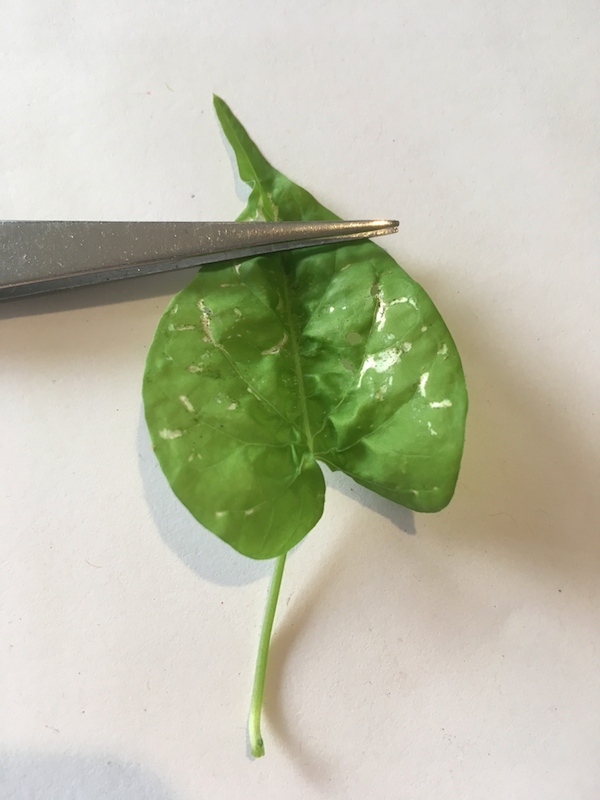Some leaves show white patches or (fewer) holes. The main symptom to my eye are leaves that are tightly folded up along their main axes with both halves apparently glued together by some "foreign" substance. (One such folded leaf is depicted in the lower right part of the 1st image. An unfolded leaf is depicted in the 2nd image.)
I planted this Ipomoea relatively late in our season: it has grown fast but has no blooms (yet).
What (perhaps who) is this and how can I get rid the cause?


